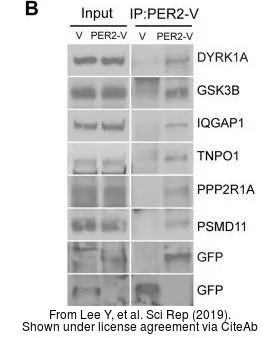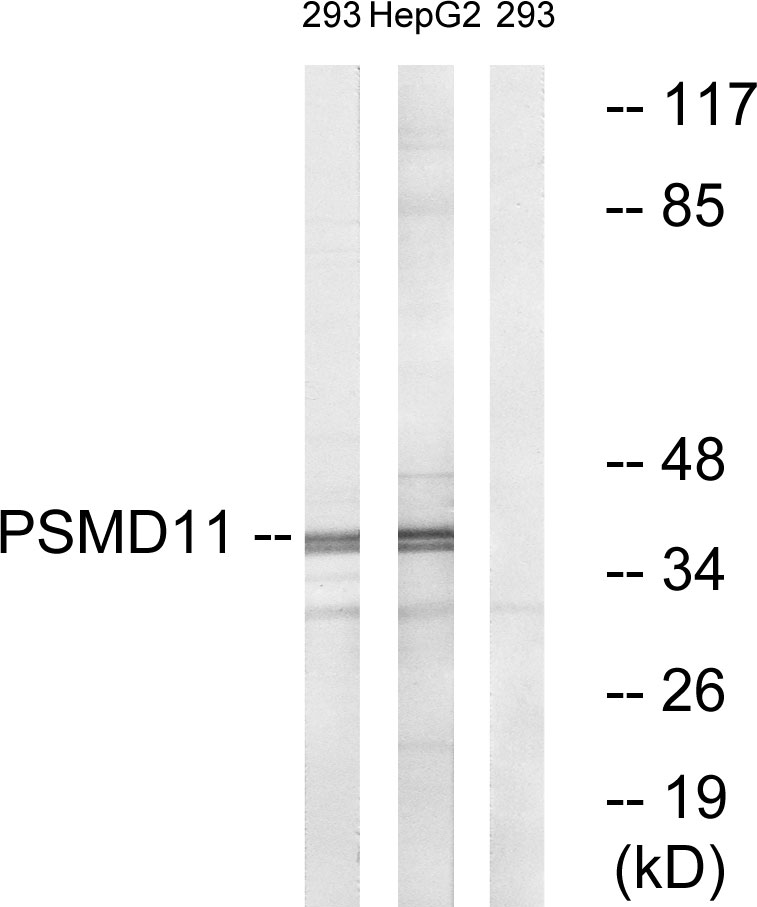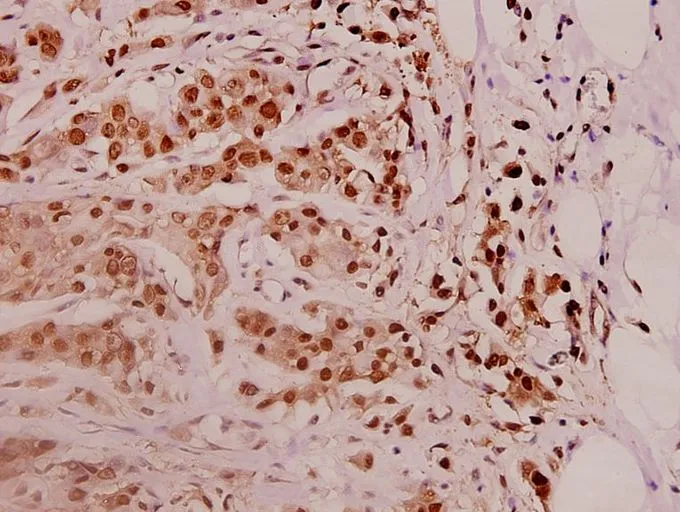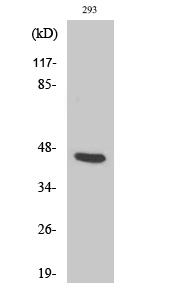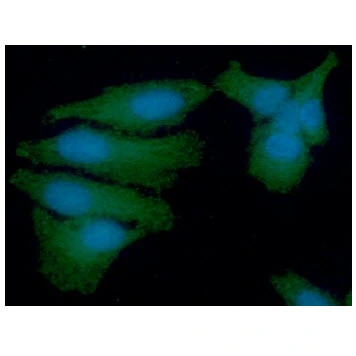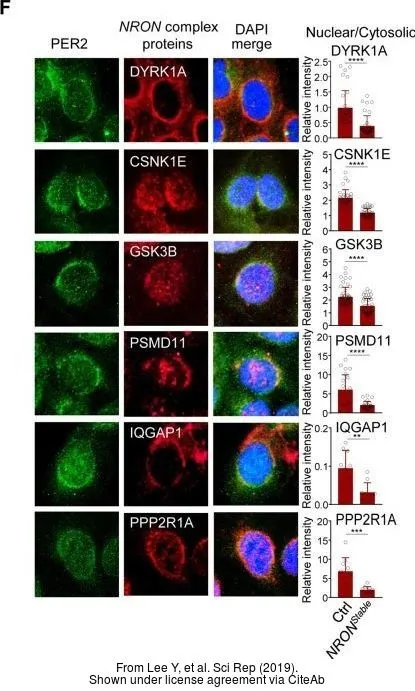
The data was published in the journal Sci Rep in 2019. PMID: 31417156
PSMD11 antibody [AT1F4]
GTX50018
ApplicationsImmunoFluorescence, Western Blot, ELISA, ImmunoCytoChemistry
Product group Antibodies
TargetPSMD11
Overview
- SupplierGeneTex
- Product NamePSMD11 antibody [AT1F4]
- Delivery Days Customer9
- Application Supplier NoteWe recommend the following starting dilutions:Western Blot: Use at 1:250 ~ 1000.Optimal working concentrations should be determined experimentally by the end user.
- ApplicationsImmunoFluorescence, Western Blot, ELISA, ImmunoCytoChemistry
- CertificationResearch Use Only
- ClonalityMonoclonal
- Clone IDAT1F4
- Concentration1 mg/ml
- ConjugateUnconjugated
- Gene ID5717
- Target namePSMD11
- Target descriptionproteasome 26S subunit, non-ATPase 11
- Target synonymsRpn6, S9, p44.5, 26S proteasome non-ATPase regulatory subunit 11, 26S proteasome regulatory subunit 9, 26S proteasome regulatory subunit RPN6, 26S proteasome regulatory subunit S9, 26S proteasome regulatory subunit p44.5, proteasome (prosome, macropain) 26S subunit, non-ATPase, 11
- HostMouse
- IsotypeIgG1
- Protein IDO00231
- Protein Name26S proteasome non-ATPase regulatory subunit 11
- Scientific DescriptionThe 26S proteasome is a multicatalytic proteinase complex with a highly ordered structure composed of 2 complexes, a 20S core and a 19S regulator. The 20S core is composed of 4 rings of 28 non-identical subunits; 2 rings are composed of 7 alpha subunits and 2 rings are composed of 7 beta subunits. The 19S regulator is composed of a base, which contains 6 ATPase subunits and 2 non-ATPase subunits, and a lid, which contains up to 10 non-ATPase subunits. Proteasomes are distributed throughout eukaryotic cells at a high concentration and cleave peptides in an ATP/ubiquitin-dependent process in a non-lysosomal pathway. This gene encodes a member of the proteasome subunit S9 family that functions as a non-ATPase subunit of the 19S regulator and is phosphorylated by AMP-activated protein kinase. Alternatively spliced transcript variants have been observed for this gene. [provided by RefSeq, Jul 2012]
- Storage Instruction-20°C or -80°C,2°C to 8°C
- UNSPSC12352203
References
- Lee Y, Shen Y, Francey LJ, et al. The NRON complex controls circadian clock function through regulated PER and CRY nuclear translocation. Sci Rep. 2019,9(1):11883. doi: 10.1038/s41598-019-48341-8Read this paper

